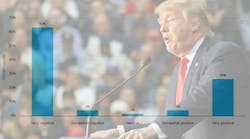Lead As a Stormwater Runoff Pollutant
Lead is one of the heavy metals of greatest water-quality concern in urban area and highway stormwater runoff. Its former use as an additive in gasoline has caused widespread contamination of soils near highways and streets and in drainageways for stormwater runoff from these areas. Also of concern is its continued presence in gasoline at “natural” concentrations to cause highway and street stormwater runoff from some areas to have lead at sufficient concentrations to violate USEPA water-quality criteria and California Toxics Rule (CTR) criteria for soluble lead in stormwater runoff. The particulate forms of lead in this runoff can accumulate in receiving-water sediments to cause exceedance of co-occurrence-based so-called sediment-quality guidelines. The exceedance of water-quality criteria and sediment-quality guidelines should not be interpreted as an adverse impact on a water body’s water quality through causing toxicity to aquatic life. In many situations these exceedances represent the worst-case nature of USEPA water-quality criteria and a technically invalid approach for assessing the cause of aquatic sediment toxicity.
Dr. G. Fred Lee has been involved in investigating aquatic chemistry of lead since the 1960s. During the 1960s and 1970s he supervised a Ph.D. dissertation, “Aqueous Environmental Chemistry of Lead,” by Dr. James Peterson at the University of Wisconsin–Madison. This dissertation was devoted to examining the occurrence of lead in urban area and highway stormwater runoff and its accumulation in lake sediments. This study provided evidence that even though greatly elevated concentrations of lead occurred in urban area street and highway stormwater runoff and lake sediments, it was in an inert, nontoxic form.
G.F. Lee and A. Jones-Lee (1997) developed a report that reviewed the issues that need to be considered in evaluating lead as a stormwater runoff pollutant. This report pointed out that while lead concentrations frequently exceed water-quality criteria in stormwater runoff, information on the chemistry of lead in urban area and highway stormwater runoff shows that it was in an inert form. They point out that the lack of toxicity of lead in urban street and highway stormwater runoff does not necessarily apply to lead derived from some industrial sources. It is therefore important to determine the source of the lead in urban stormwater runoff in evaluating its potential water-quality impacts.
In 2000, Drs. G.F. Lee and Scott Taylor of RBF Inc. in Irvine, CA, conducted a yearlong study of heavy metals in stormwater runoff from 10 watersheds in the Upper Newport Bay area in Orange County, CA. Their report (2001) showed that some heavy metals such as lead exceeded CTR criteria for soluble lead, and the stormwater runoff was toxic to Ceriodaphnia (a freshwater zooplankton standard test organism). However, toxicity identification evaluations using ethylene diamine tetracetic acid additions showed that the heavy metals were not the cause of this toxicity. Much of this toxicity was due to the organophosphorus pesticides, diazinon and chlorpyrifos, with likely contribution to the toxicity by the pyrethroid-based pesticides.
Lead in Aquatic Sediments
Since lead tends to develop particulate forms (precipitates) in aquatic systems and, for many sources, is in a particulate form that does not dissolve in most aquatic systems, it tends to accumulate in soils and sediments. There are several examples of technically invalid approaches for attempting to regulate lead in stormwater runoff because of its accumulation in sediments. One of the most notable of these is the situation that occurred in the Santa Monica Bay Restoration Project. The Los Angeles Regional Water Quality Control Board (LARWQCB) determined that since a sample of Santa Monica Bay sediments contained lead above the Long and Morgan co-occurrence-based sediment-quality guideline, the communities in the Santa Monica Bay watershed should spend $42 million controlling lead and other heavy metals in stormwater runoff to the Bay. However, Lee and Jones-Lee (1994, 1995, 1998) discussed there is need to determine if the lead exceedance of Long and Morgan sediment-quality guidelines represented a situation of lead-caused sediment toxicity. This is especially important since lead tends to form in highly insoluble precipitates in marine waters. The LARWQCB ignored a recommendation to conduct toxicity testing and adopted the proposed Santa Monica Bay Restoration Project plan based on the lead sediment exceedance without conducting the sediment toxicity testing. This approach was supported by the California State Water Resources Control Board based on the recommendations of one of its staff who served as an advisor to the Santa Monica Bay Restoration Project and by the USEPA Region 9. Subsequent sediment toxicity testing has failed to detect toxicity in the Santa Monica Bay sediments due to heavy metals, including lead. Therefore, the basic premise for the Santa Monica Bay Restoration Project is technically flawed.
The USEPA Region 9 has a history of using co-occurrence-based sediment-quality guidelines as regulatory limits upon which multimillion-dollar cleanup projects are based. As Lee (2005) discussed, this approach is obviously technically invalid and should not be followed.
In July 2005, the LARWQCB issued total maximum daily loads (TMDLs) for Ballona Creek Metals and Ballona Creek Estuary Toxic Pollutants. The staff reports for both of these TMDLs is available at www.swrcb.ca.gov/rwqcb4/html/meetings/tmdl/tmdl_ws_ballona_creek.html.
The Ballona Creek Metals TMDL, which includes lead, is based on exceedance of CTR criteria. The Ballona Creek Estuary TMDL, which includes lead, is based on an exceedance of the co-occurrence-based sediment-quality guidelines. As Jones-Lee and Lee (2005) discussed, co-occurrence-based sediment-quality guidelines are based on a fundamentally flawed approach, in which there is an attempt to meaningfully relate the total concentrations of chemicals in sediments and aquatic life toxicity or other water-quality impacts. These guidelines should not be used for any purpose, much less as they are being used by the LARWQCB and the USEPA Region 9 to establish regulatory limits for environmental contaminants.
Lead in Soils
Beginning in the early 1990s, Dr. G.F. Lee became involved in assessing the public health significance of lead in soils as it could impact children’s health. The initial involvement included work on the Sacramento, CA, Southern Pacific railyard State of California “Superfund” site to evaluate the adequacy of site cleanup of soil lead to protect children living in low-income housing that was proposed to be constructed at the remediated site. Reports by Lee and Jones (1990, 1991) and Lee and Jones-Lee (1992) summarize this work. These papers discuss the importance of evaluating health impacts of soil lead, with particular reference to allowing children to use an area with elevated soil lead.
As reviewed by Lee and Jones-Lee, in the early 1990s there was increasing recognition that even low blood lead levels in children were detrimental to the child’s health from several perspectives. This led to a variety of studies that were designed to evaluate allowable soil lead levels where young children could play with limited potential for adverse impacts.
On October 17, 2005, Rachel’s Environment & Health News #827 presented a discussion of a “Precautionary Approach to Toxic Lead.” This discussion is available at www.rachel.org/bulletin/index.cfm?St=3.
According to Rachel’s:
The American Academy of Pediatrics (AAP) has just issued a new “policy statement” urging the U.S. to eliminate toxic lead from all housing, to stop poisoning the nation’s children.[1]
The Academy says 25% of children in the U.S. still “live in housing with deteriorating lead-based paint and are at risk of lead exposure with resulting cognitive impairment and other sequelae [consequences].
The AAP action is an example of the increased recent interest in reducing children’s exposure to lead in the environment.
In the state of California, the Department of Toxic Substances Control (DTSC) has the responsibility for developing regulations to protect human health from adverse impacts of chemicals associated with contaminated soils and wastes. Many years ago DTSC adopted the soil lead hazardous-waste guideline value originally developed by the California Department of Health Services of 1,000 mg/kg total lead. California is one of the few political jurisdictions that regulates lead and some other constituents based on total concentrations. As discussed below, there are significant problems with this approach, which fails to consider bioavailable forms.
Recently DTSC has completed an initial updated review of soil lead public health issues. In September 2005 DTSC organized a Lead Report Workshop, where a summary of a Draft Lead Report was presented.
According to the Executive Summary of this report:
This report examines lead in the environment, discussing the ways that lead appears in the environment, the means whereby exposure occurs, the health effects associated with that exposure, and the ways exposure can be minimized. Considerable research has been conducted recently regarding the health effects of lead, particularly as it affects children. New information about the low concentrations of lead that can adversely affect sensitive populations has prompted several changes in laws and regulations that provide additional protection. Accordingly, the Department of Toxic Substances Control (DTSC) proposes changes to the hazardous waste threshold that protects these sensitive populations from lead exposure.
If you wish for further information on the Draft Lead Report, contact Nancy Ostrom at [email protected] or 916-322-3385.
While DTSC has not selected a proposed revised soil lead guideline, the current 1,000 mg/kg could be reduced to a few hundred mg/kg.
The 1,000 mg/kg guideline for determining if a soil that becomes a waste is a “hazardous waste” is of importance to some stormwater runoff water-quality managers. In the early 1990s, the National Resources Defense Council (NRDC) filed suit against the California Department of Transportation (Caltrans) District 7 (Los Angeles region) for failing to adequately implement its National Pollutant Discharge Elimination System permit for stormwater runoff within the district. One of the issues of particular concern was the presence of lead in catch-basin sediments above the DTSC 1,000 mg/kg guideline level. The judge ruled that since that concentration represented a “hazardous waste,” Caltrans, as part of cleaning out catch basins, must dispose of these sediments as a hazardous waste. This requirement significantly increased the cost of Caltrans maintenance of catch-basin sediments.
As part of DTSC’s review of the public health significance of lead in the environment, in September 2005 DTSC held a workshop on the bioavailability of lead and arsenic. This workshop was prompted by the finding that the uptake of lead from soils and its accumulation as blood lead has been found to be dependent on a variety of factors. Lead is derived from a number of sources, including mining, smelting, lead-based paints, leaded gasoline, etc. For some soils and some lead sources, high concentrations of lead in the soil do not appear to be taken up as readily as lower concentrations from other sources and types of soil. This caused DTSC to organize a workshop in which experts in the field on the bioavailability of lead were asked to present summaries of their work on this issue. A series of presentations was made by various experts on in vivo and in vitro measurements of bioavailable lead. The PowerPoint slides from these presentations are available as three DVDs that can be obtained upon request from Dr. John Christopher of DTSC, at [email protected] or 916-255-6630.
From the information presented at this workshop, it appears that it is now possible, through chemical and/or biological testing, to determine the bioavailable fraction of lead in a soil sample. Similar work on the bioavailability of arsenic in soils has shown that it is not possible to predict the bioavailable forms of arsenic that are a threat to human health.
Lead in Wastes
Related to evaluating potential public health significance and management of lead in soils and wastes is the USEPA’s approach for hazardous-waste classification. As part of implementing the Resource Conservation and Recovery Act (RCRA), the USEPA initially developed the Extraction Procedure Toxicity test (EP Tox test). This test involved extracting a sample of a waste with an acidified solution and determining the amount of dissolved waste components in the extract. The concentrations extracted then were compared to drinking-water maximum contaminant levels (MCLs). Lead was one of the constituents that was included in the EP Tox test. As discussed in Lee and Jones (1981), the USEPA’s proposed approach for hazardous-waste classification was not technically valid. There were so many problems with the EP Tox test that various individuals were able to convince Congress, as part of reauthorizing RCRA, to require that the USEPA develop an improved hazardous-waste extraction test. This led to the current Toxicity Characteristic Leaching Procedure (TCLP).
While the TCLP is improved from the EP Tox test, it is still a highly arbitrary, unreliable approach for determining whether lead or other constituents in a waste, such as a soil excavated near a highway, must be managed as a hazardous waste and therefore be deposited at considerable increased cost in a hazardous-waste landfill, or whether it can be managed as a solid waste, which can be deposited at far less cost in a municipal solid waste (MSW) landfill. This issue as it impacts Caltrans has been reviewed by Lee and Taylor (1998). This report discusses the approach that should be used to evaluate the water-quality significance of lead in highway shoulder soils. It discusses that the DTSC 1,000 mg/kg or some other total concentration of lead hazardous-waste classification approach, as well as the USEPA TCLP approach, is not technically valid for assessing the potential public health and water-quality significance of lead in soils that are managed as a waste. Site-specific evaluations need to be made to properly make this evaluation.
Managing e-Wastes
There is controversy today regarding the appropriateness of disposing of electronic wastes (e-wastes) in MSW landfills. Recently the Solid Waste Association of North America (SWANA) released a report that claims that the disposal of electronic wastes in MSW landfills is not a threat to cause groundwater pollution. Lee developed comments on this report (2004, 2005).
As discussed by Lee, the SWANA approach for concluding that lead and other potentially toxic heavy metals in electronic wastes do not represent a threat to cause increased groundwater pollution by these heavy metals is based on a technically invalid approach for assessing this issue. SWANA representatives’ approach is based on their assessment that heavy metals such as lead in MSW landfill leachate are not a threat to pollute groundwaters, based on the concentrations found in leachate, versus the concentrations allowed in the TCLP test for nonhazardous wastes.
In the late 1990s, the USEPA had Science Applications International Corp. (SAIC) conduct a review on the chemical characteristics of MSW leachate. As discussed above, at this time it is not clear whether allowing the disposal of e-wastes in MSW landfills will significantly increase the public health and environmental threat from heavy metals in MSW landfills. There are situations, however, where MSW landfills already contain greatly elevated concentrations of some heavy metals, such as lead. The SAIC (2000) report on the chemical composition of municipal landfill leachate for over 200 landfills reported that the mean concentration of lead in MSW leachate was 433 µg/L. The 95th percentile concentration was 500 µg/L. The current USEPA drinking-water MCL guideline concentration is 15 µg/L. The concentrations of lead in some landfill leachates represent a significant threat to pollute groundwater when the landfill liner system eventually fails to contain/collect the leachate. This issue was ignored by SWANA in the development of its e-waste report. It is certainly prudent public health and environmental protection policy to restrict the disposal of wastes in municipal landfills, such as e-wastes, that have the potential to contribute to significant environmental pollution.
SWANA, in its propaganda attempt to convince those who read their report and the MSW Management paper based on this report, claims that today’s minimum design RCRA Subtitle D (MSW) landfills are protective of public health and the environment. However, as reviewed by Lee and Jones-Lee (2005), the ultimate failure of the plastic sheeting and compacted clay liner and cover of today’s minimum design MSW landfills, and the unreliability of the monitoring systems that are allowed by the USEPA and the states for detection of this failure before widespread offsite groundwater pollution occurs, means that at most locations where MSW landfills are allowed to be sited, ultimately there will be significant groundwater and, at some sites, surface-water pollution by landfill leachate. Many of these sites will become eventual “Superfund” sites, requiring large-scale expenditure of funds for groundwater and environmental cleanup.



